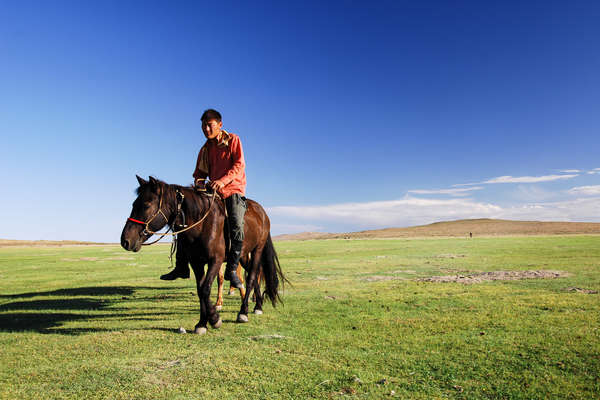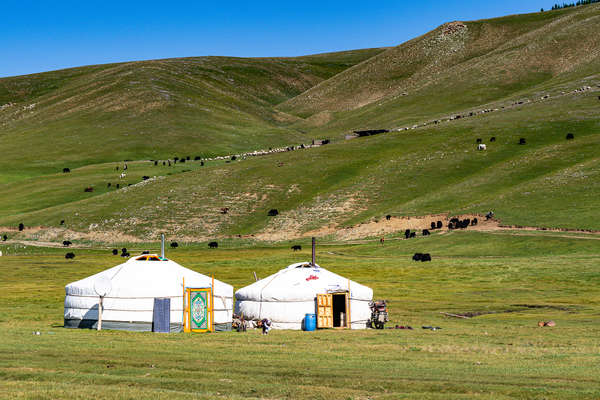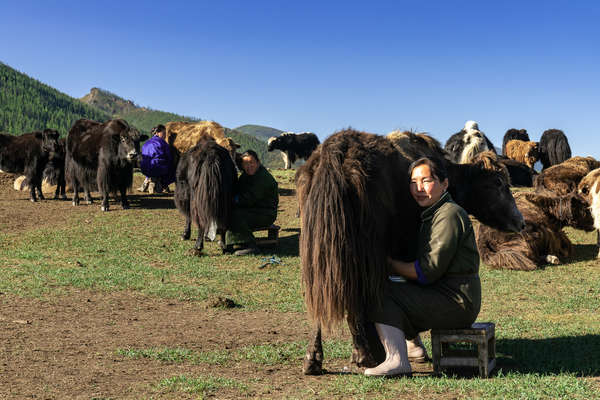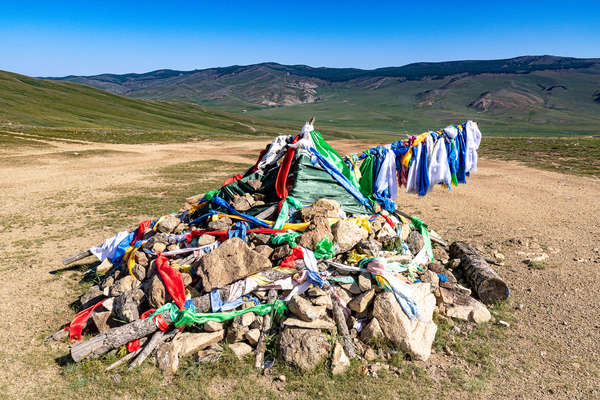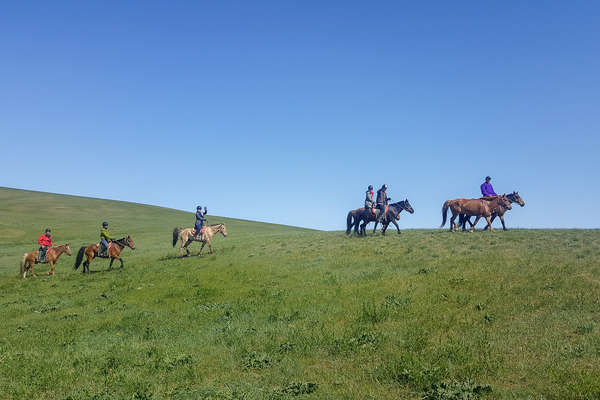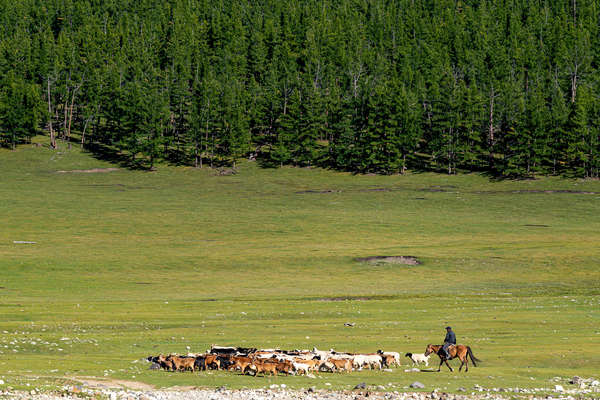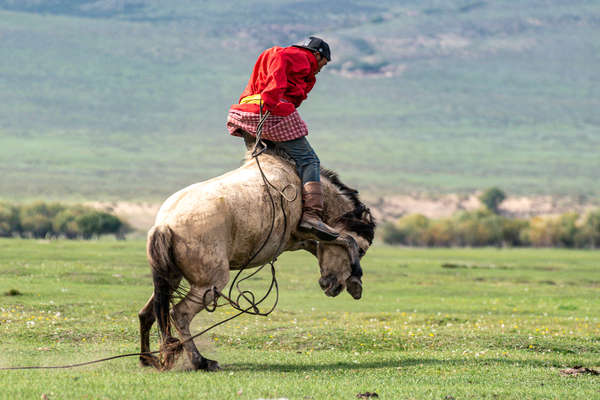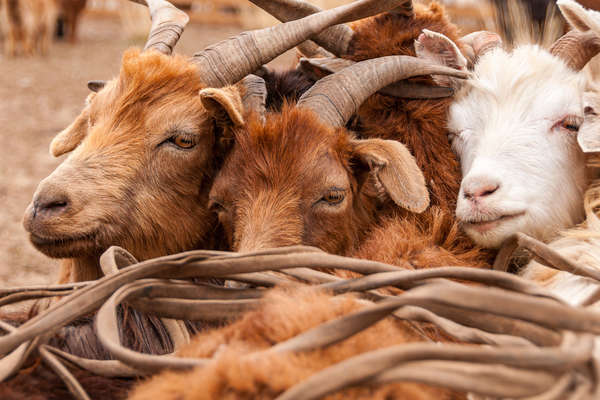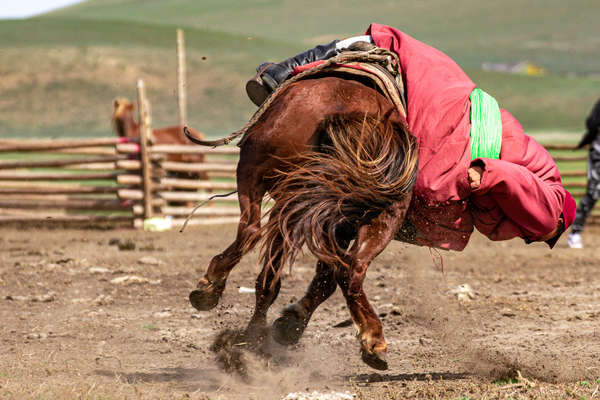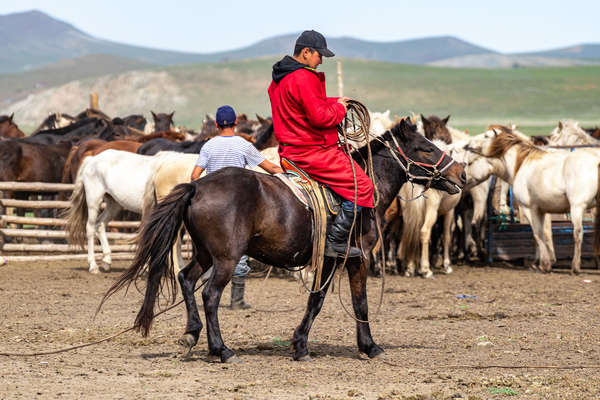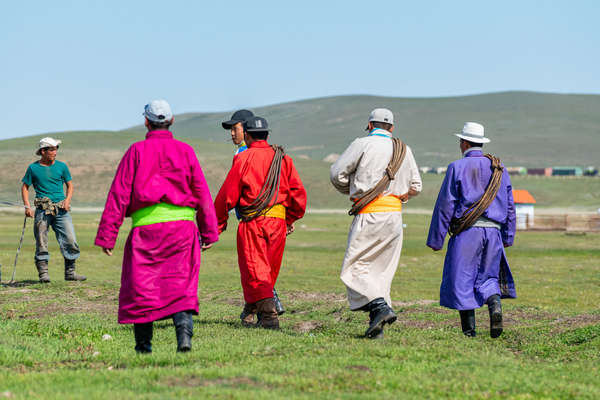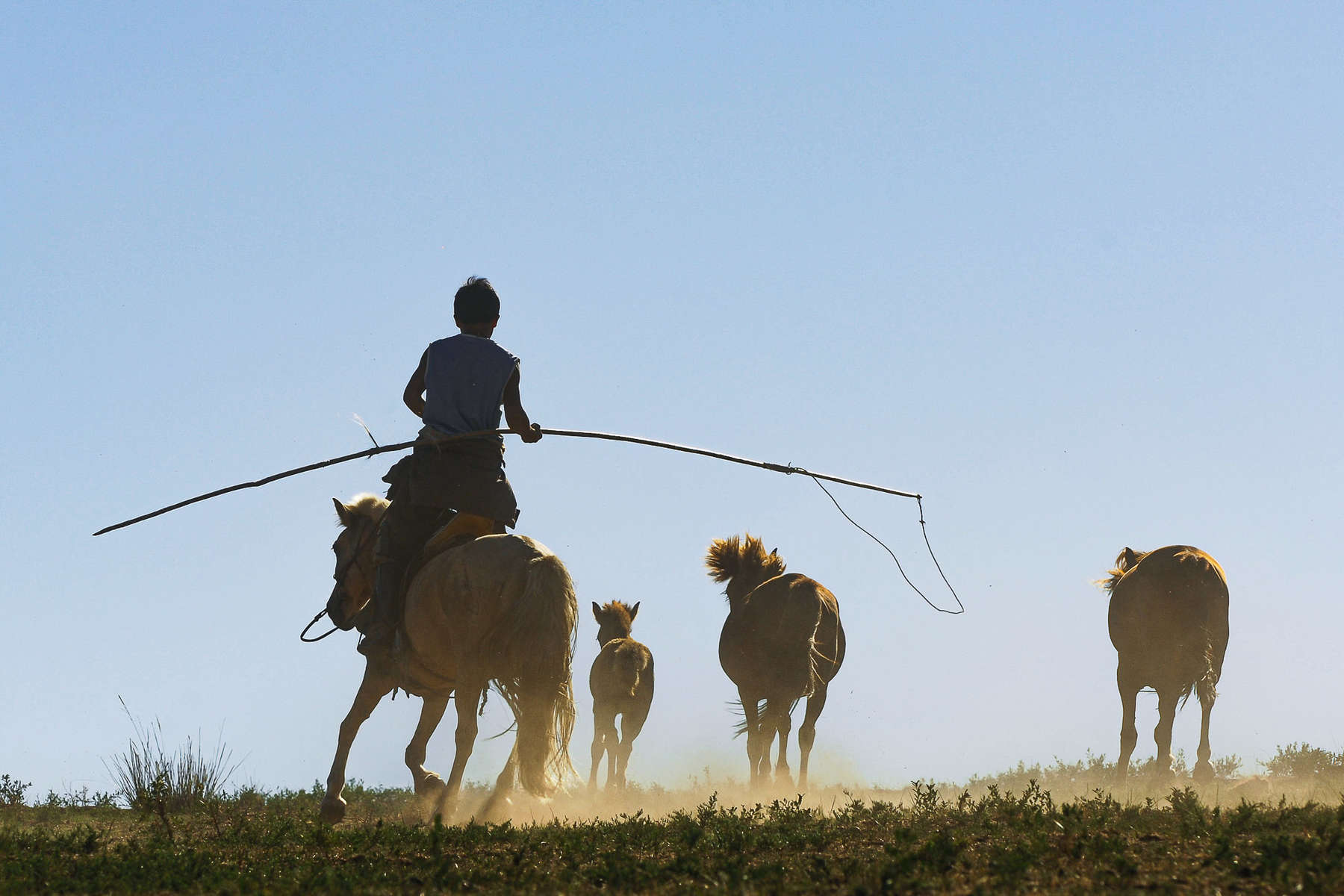
Itinerary
Highlights
- Ride gentle and steadfast Mongolian horses across the immensity of the Mongolian steppe
- Immerse yourself in the nomadic family life
- Discover exceptional landscapes typical to Mongolia
- Ride along the great Gengis Khan trail.
- Visit the renowned sites of the Orkhon Valley: Karakorum, the Waterfalls of Orkhon, Tövkhön Monastery and explore the stunning 8 lakes region on horseback.
- This itinerary is exclusive to Equus Journeys and a very unique riding holiday.
Dates & prices
Price details
- International flights are not included, but can be booked upon request.
- The above rates are per person, based in sharing a twin room/tent or sleeping in a shared yurt (up to 6 beds).
- The group is made of 5-8 riders maximum.
- Please note: the ride will also confirm for 4 riders on payment of a supplement of c. €285/£250/$335 per person in June/September, or €210/£190/$245 in July/August. Once the group has reached 5 people, we will remove this supplement from your invoice and refund you if you have already paid it.
- It is possible to arrive a day before the group. We can organise your transfer, dinner and hotel night starting from €130/£115/$150 per person.
- Young riders aged 14 and over are very welcome to join this trail, provided they are accompanied by a parent and meet the riding requirements.
- A visa is necessary and is your own responsibility.
- There is a rider weight limit of 85kg / 13,3 stone / 187lb.
Please Note
The itinerary may be modified at anytime for security reasons, meteorological or events beyond our control such as blocked roads, rivers in flood, drought, strikes and local holidays. Equus Journeys, our local partners and their local guides will always strive to find the best solution and will alter the itinerary as needed.
The names of the hotels and accommodation are given for information only and depending on availability, they may be modified without notice and replaced by another of a similar standard.
Price includes
Logistics
1 support vehicle
1 cook
1 horse equipped with saddle and bridle per rider
Inland transports
Airport transfers if travelling with the group
Accommodation
2 nights in a hotel in Ulaanbaatar
Meals
Extras
Entry fees to sites mentioned in the itinerary
Price doesn't include
Meals
Transports
Visa fees
Extra
Extras
Insurance
Optional
Transport
Equestrian info
Horses
Guide & local team
The team is usually composed of:
- At least 2 horsemen (locals) who accompany you through your entire ride.
- A cook who will be cooking delicious meals on the trail, when in yurts the meals will be prepared by nomadic families.
- A driver.
Minimum riding ability
Minimum riding ability
There is a rider weight limit of 85kg / 13,3 stone / 187lb.
Pace
Tacking ability and participation
Trip conditions and Requested experience
Previous experience of riding a trail for several days is a requirement. Riders who do not ride regularly must get riding fit before the holiday.
You will have to be able to adapt to another riding style and understand that Mongolians have a different relationship with horses than what we are used to.
Visiting a new country offers the opportunity to meet other cultures with different mentalities, therefore it is important to accept these differences and respect the local way of life.
Equestrian equipment
Whilst the stirrup leathers are adjustable, tall riders may find that they are short in length. If you are tall then we suggest you bring your own pair.
We recommend our riders to wear a helmet to the correct standard and you should bring your own to ensure a proper fit.
Travel info
Comfort
Nights in yurts with the nomads: 5-6 beds in a yurt, basic outdoor toilet facilities, bucket shower.
Nights in yurt camps: 5-6 beds in a yurt, bathroom facilities and hot water.
Nights in camp: two-man tents. Mattresses are provided..
Meals
Breakfast: Occidental and/or Mongolian.
Lunch: a cook often provides a hot meal if the logistic vehicle is available at that phase of the journey, if not a picnic lunch will be available.
Dinner: full hot meal (soup, main, dessert). It is likely a sheep will be bought from a local shepherd - dinner straight from the source!
Water:
Do not to drink water from unknown sources. The cook will boil water each day for you to fill up your water bottles but you should also bring water-purification tablets such as Micropur.
Climate
On the other hand, the country is also blessed with a continental climate of extremes due to the country's geographical profile: vast semi-desert plateaus at an average altitude of over 1500 metres.
Winters are tough and long (from October to April), with temperatures dropping to surprisingly - 30° or -40°C in January and February. Snowfalls are not unusual to be present in the Gobi desert up until April, even some lakes remain frozen up until June; you will start to see the end of winter around the last days of September.
Summers in Mongolia are inaugurated by a short rainy season, from mid-July to September,the rain is usually light and brief but and generally take place at the end of the day. Temperatures are mild in the north of the country and extremely hot in the Gobi desert in the south. Due to the high altitude, the evenings are cool, even during the summer.
Violent winds happen often, especially during the short spring, where they also bring with them sand storms. On top of this, the changes in weather can be vast and sudden. From spring and autumn temperatures can pass from - 5°C at the beginning of the day to + 30°C at noon.
The country also experiences dzud or zud, a Mongolian term for a severe winter; a white dzud signals heavy snowfall which impedes access to the grazing pastures for the livestock and a black dzud means that a lack of snowfall and freezing temperatures create a drought and the livestock suffer from dehydration.
Depending on the region of Mongolia you are choosing to visit, the best time to travel there is between May and the end of September.
Tips
Packing list
You are in a mountainous area and temperatures can be cold, especially at night. Consider layered equipment and clothes that will allow you to adapt to each temperature you will face during your ride.
When packing, please remember that the region can be cold and it would be wise to bring layers!
Pack carefully and sensibly: the following guide is here to give you an idea of what to bring.
Soft bags are preferred as they are easier to fit into the back up vehicle
Head
- Equus Journeys strongly recommend that you wear a riding helmet and that you take your own to ensure a correct fit. There are many lightweight options available nowadays
- Sunhat for when not riding
- Sunglasses - with a cord attached so they don't fly off when riding
- Buff or bandana
- Warm hat for cold nights
Upper body
- Thermals (long or short sleeved)
- Long sleeved shirts provide protection from the sun and are an extra layer
- T-shirts
- Lightweight fleece or jumper
- Warm fleece or jumper (and a spare in case one gets wet)
- Warm and waterproof jacket - it can rain at any time of year and the evenings can be particularly cold. No ponchos or anything that can flap around!
Legs
- Lightweight, comfortable riding trousers or jodhpurs - we recommend riding in them at home before taking them on holiday to ensure they don't rub
- Thermals
- Casual trousers for the evenings, such as jeans or tracksuit bottoms
- Waterproof over trousers
Hands and Feet
- Comfortable riding boots. We recommend short boots with half chaps but you may wish to take long chaps as an extra layer against inclement weather. We don't recommend taking your favourite long leather boots in case they get damaged. We would suggest something with a good grippy sole.
- Waterproof shoes/boots can be useful for abundant dew in the mornings or when it rains
- Trainers or equivalent light shoes for moving around in the evenings
- Several pairs of warm, thick socks
- Gloves - your hands are particularly exposed to the sun, cold or rain whilst riding. Waterproof gloves can be particularly useful
Nightwear
- Sleeping bag. You need at least a comfort factor down to minus 5°C, but would recommend at least minus 8 or 10°C (especially outside of July/August). It is possible to request a sleeping bag from the local team (limited availability)
- Sleeping bag liner - silk, cotton or fleece - adds an extra layer
- Pyjamas or tracksuits or thermals for sleeping in
Please remember it can get very cold at night, especially if you are travelling in June/September: pack accordingly.
Other useful items
- Water-purification tablets
- Swimsuit - for swimming/bathing in lakes
- Towels - camping ones will both dry and pack more easily
- Small backpack for accessing items required during the day (carried by support crew)
- Camera and high capacity memory card. Spare battery
- Bumbag for carrying your camera and small items whilst riding
- Headtorch or small torch for moving around camp at night - bring spare batteries and bulbs
- Water bottle (2 litres or 2 x 1 litre)
- Wet Wipes or equivalent (for when washing facilities aren't available)
- Toilet paper and a lighter to burn it with
- Small plastic bags for rubbish
- Ear plugs (for light sleepers)
- Solar charger/powerbank
In your hold luggage
- Any liquids, such as shampoo, moisturiser, deodorant unless they are less than 100ml and all bottles can fit in a small, clear, plastic ziplock bag. We recommend biodegradable washing products where possible.
- Swiss army knife (or equivalent)
In your hand luggage
- Any valuables, such as your camera, ipod, ipad etc.
- Your riding hat
Medical kit
- Micropur tabs
- Sunscreen and lip balm - should be high factor
- Insect repellent, preferably containing deet
- Any medication you regularly take
- Blister plasters in case of any rubs
- Antiseptic cream, plasters, aspirin, anti-histamine, insect-bite salve etc...
- Spare prescription glasses/contact lenses
- Eye drops
- Imodium or similar anti-diarrhoea medication
- Re-hydration sachets
- Water purification tablets
- Antiseptic wipes
- Handwash gel
Our Recommendations
- Soft bags are preferred as they are easier to fit into the back up vehicle.
- Backpacks cannot be worn whilst riding. We recommend a small bumbag or a coat with pockets so that you can carry small items with you during the day (camera, sunscreen, lipbalm etc)
- We recommend travelling in your riding boots and carrying your hat and some riding clothes in your hand luggage - then if your luggage goes astray you are still able to ride!
- Tall riders may benefit from taking a pair of long stirrup leathers with them (the local stirrups are adjustable but are sometimes limited in length)
- We recommend taking a copy of your passport and insurance documents with you in case you lose your originals
- Please take your rubbish home with you. There are no recycling facilities in Mongolia, so take your used batteries, aerosols etc back home and dispose of them appropriately. Try to leave excess packaging material at home before travelling
- You may wish to take some photographs or postcards of your home with you to show your hosts. You may also wish to take some crayons, colouring books etc for the children
Sustainable tourism
- Travel light. It's a little known fact, but the lighter you pack, the better for the environment as heavy bags will produce higher emissions (when flying a plane or driving a car!).
- Reduce plastic waste. Take your favorite reusable bottle with you. Avoid single-use bags, cups, or straws.
- Preserve nature. Always take your rubbish with you during the ride and recycle them. Leave all the flowers or plants as you found them, and never get too close when observing wildlife. Make sure to use eco-friendly products such as body wash or laundry detergent (if camping) to protect both your skin and the environment.
- Choose your experiences carefully. Respect animal life by not participating in any activities that abuse wild animals (shows, elephant rides, etc.).
- Support local populations. Buy local handicrafts, be respectful of customs, and learn about the culture of local communities.
- Share! Raise awareness among your family and friends about sustainable tourism.
Did you know?
Did you know?
The Mongolian horse is
a native equine breed of Mongolia and one of the indigenous breeds from China.
This breed is considered one of the oldest breeds of horses, with bloodlines
that date back to ancient times.
Due to the long history of this breed (dating
back to roughly 2000BC), the Mongolian horse was able to influence other equine breeds
throughout both Asia and Europe. For example, several breeds from Japan, such
as the Noma Horse, the Hokkaido, the Kiso, the Kyako and the Tokara may have
been influenced by the Mongolian horse. In Europe, you can see their influence
in breeds such as the Scandinavian and Icelandic.
Overall the Mongolian
horse is an attractive breed with a unique appearance that helps to
differentiate it from other breeds. It is also important to note that there are
four different types of Mongolian horse, based upon the different regions in
Mongolia from which they come. The types include the Steppe, Gobi, Mountain and
Forest. On your trail riding holiday in
Mongolia, you will have the chance to ride this sturdy little breed.

